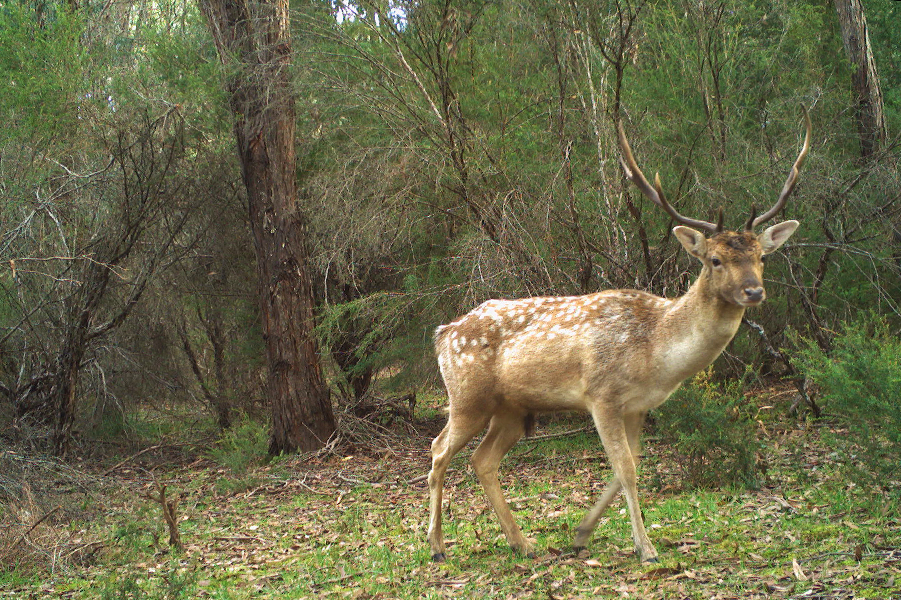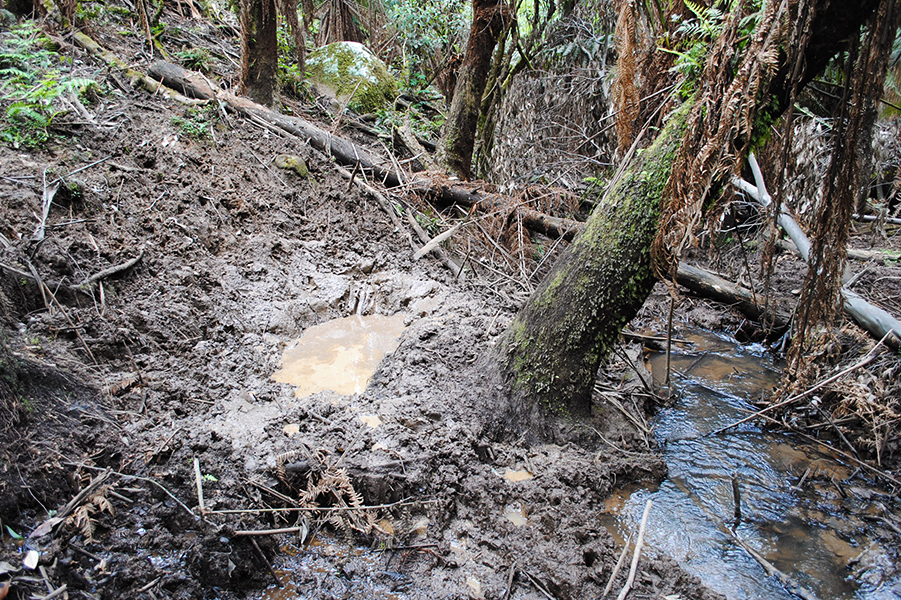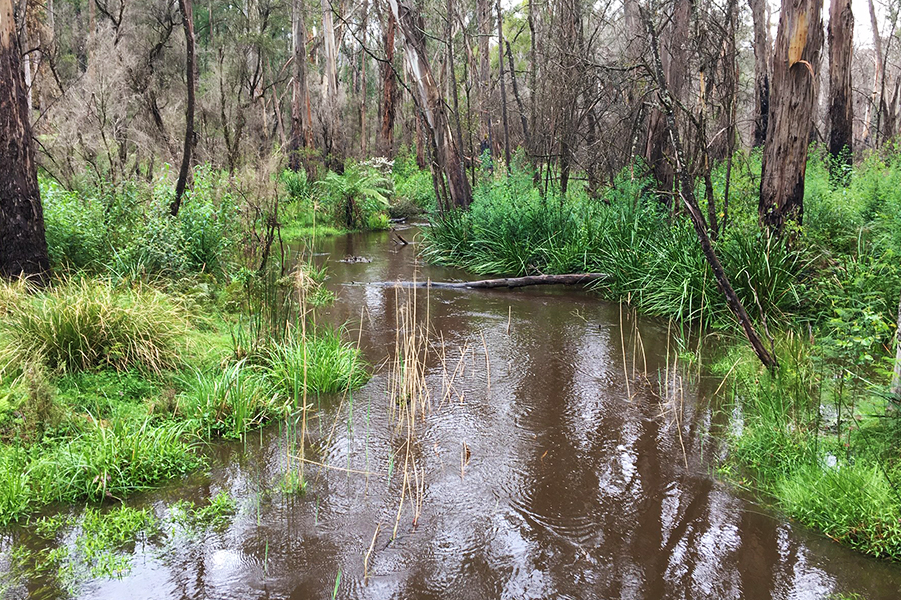Putting the spotlight on deer control
Deer are a key threat to native vegetation and critical habitat across the region. Modelling to predict deer density and monitoring vegetation recovery will provide critical information to help protect high-value areas.

Keeping deer in the headlights
Deer are a key threat to riparian values in our catchments and understanding where deer impacts are the greatest is critical to targeting interventions to protect our waterways.

Collaboration to prioritise deer control efforts.
In a collaboration comprising Melbourne Water, the Department of Environment, Land, Water and Planning (DELWP), Parks Victoria and the University of Melbourne’s Waterway Ecosystems Research Group (WERG), a deer modelling study has built a model to predict where the impacts of deer on waterways are likely to be greatest.
Established through the Melbourne Waterways Research Practice Partnership, the study developed a spatial dataset that maps deer density and impacts across the Port Phillip and Westernport region. Specific ecological values and assets at high risk from deer impact have been identified. These include high-value waterways, riparian zones with high-biodiversity value, and revegetation projects.
The model will enable efficient targeting of deer management, protecting our priority waterways, drinking water and revegetation efforts.
“The deer modelling project has been running for two years under our partnership with Melbourne Water and we are looking to undertake a range of activities in 2021 to further refine the model to inform efficient targeting of deer impact mitigation and control activities” said WERG researcher Joe Greet.

Working together to control deer and monitor vegetation recovery
The model outputs have been used to inform priority projects to protect waterways. One of these is in the Bunyip State Park, where deer have flourished following the March 2019 bushfires. Melbourne Water and Parks Victoria have initiated the Bunyip Recovery Deer Control Program that focuses on active deer management.
Starting in June this year, the program aims to protect the park’s waterways and threatened flora and seeks to engage with and assist landowners in their efforts to manage deer. It will establish 60 biodiversity monitoring plots.
Jack Dinkgreve, Area Chief Ranger from Parks Victoria highlights the importance of the Melbourne Water incentives program for this project and how bringing together multiple funding sources has also allowed enhanced monitoring in addition to active deer control.
“With the Melbourne Water incentives program, we have also been able to allocate additional funding to include a vegetation monitoring research component to the project,” said Jack.
“We’ve tailored the vegetation monitoring program to include representative sites within the deer control area funded by Melbourne Water.
We’ll be able to do follow up surveys in spring next year which means we’ll be able to compare results from the initial surveys done this spring with the surveys done in 12 months’ time.
While vegetation monitoring sites are usually re-surveyed every three to five years, it is hoped that we will see a change much quicker than that with a reduction in deer numbers. There is sense of completeness around that,” he said.
Dan Robertson from Melbourne Water highlights the importance of working in partnerships for deer control activities.
“Along with weeds, deer pose a significant risk to the high value, priority waterways of the Bunyip State Park. By working closely with Melbourne University through the Research Practice Partnership and with Parks Victoria through the Liveable Communities Liveable Waterways Incentive Program. we are helping to protect waterways by managing threats and delivering the Healthy Waterways Strategy.”
Dan Robertson, Melbourne Water